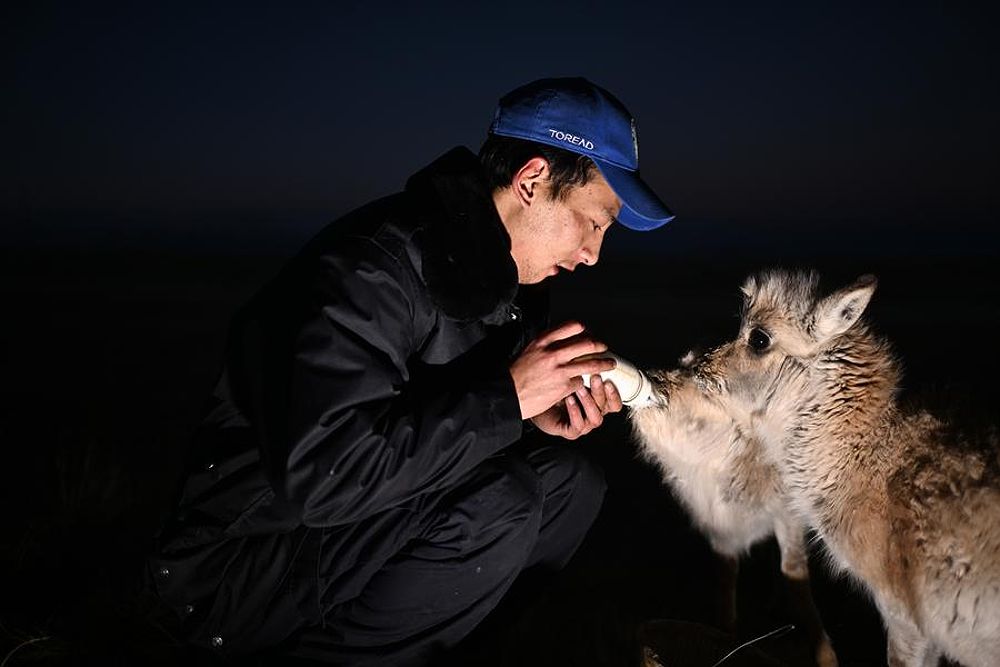Discover how advanced technology, including a 5G base station and remote real-time observation system, is revolutionizing wildlife conservation in China's Hoh Xil Nature Reserve, home to the Tibetan antelope and other rare species.
Advanced Technology Bolsters Wildlife Conservation Efforts in China's Hoh Xil Nature Reserve
China's Hoh Xil Nature Reserve, located in the Sanjiangyuan National Park, is a vast and uninhabited land known as the "roof of the world." It is home to a diverse range of wildlife, including the Tibetan antelope, and has become a focal point for biodiversity conservation efforts. In recent years, the implementation of advanced technology has played a crucial role in safeguarding wildlife and enhancing ecological protection in this remote and challenging environment.
The Legacy of Sonam Dargye
The Sonam Dargye Protection Station, established in 1997, stands as a tribute to Sonam Dargye, a passionate advocate for wildlife preservation who tragically lost his life at the hands of antelope poachers. His dedication and sacrifice continue to inspire the new generation of rangers in Hoh Xil, such as Tsering Lozang, the youngest ranger at the protection station. His commitment to following in Sonam Dargye's footsteps demonstrates the enduring spirit of those who protect this land.
Technological Advancements in Communication
The rugged terrain and lack of communication signals in Hoh Xil posed significant challenges for rangers in the past. However, the introduction of a 5G base station near Zonag Lake, a crucial area for Tibetan antelope breeding, has revolutionized communication in the region. Rangers can now easily connect with their families and colleagues, sharing updates and photos of wildlife through phone calls and messaging apps. This connectivity has transformed their ability to stay connected with the outside world while carrying out their conservation work.
Remote Real-time Observation System
To strengthen the monitoring and protection of key ecological areas, Qinghai Province initiated the development of a networked, remote real-time observation system in 2016. This system, known as the "window of ecology," consists of 76 observation points across the Hoh Xil Nature Reserve. It enables close observation and study of the migration patterns of Tibetan antelopes and other rare wildlife species. The data collected through this system provides crucial support for biodiversity conservation in the Sanjiangyuan National Park.
The Role of AI Technology
Researchers at the Northwest Institute of Plateau Biology, Chinese Academy of Sciences, recognize the importance of technological advancements in protecting the biodiversity of the Qinghai-Xizang Plateau. They believe that AI technology can play a significant role in monitoring the reproductive status of Tibetan antelopes. By reducing human resource input and minimizing statistical errors, the efficiency of ecological protection and scientific research in Hoh Xil can be enhanced.
Promoting Public Awareness
The implementation of advanced technology not only aids in wildlife conservation efforts but also helps raise public awareness. Livestreaming the migration and birth of Tibetan antelopes fosters a deeper understanding and appreciation for biodiversity conservation. It allows people from around the world to witness the beauty and importance of these remarkable animals and their habitats.
Future Developments
The success of the 5G base station near Zonag Lake has paved the way for further technological advancements in the Hoh Xil Nature Reserve. Plans are underway to construct more 5G base stations, while the integration of 5G remote inspection, on-site patrol, and helicopter surveillance will bolster anti-poaching and monitoring capabilities. These advancements ensure that Hoh Xil remains a protected sanctuary for its diverse wildlife.
Conclusion
The remarkable progress achieved in biodiversity conservation in Hoh Xil, coupled with the pivotal role played by advanced technology, showcases China's commitment to safeguarding wildlife and preserving natural habitats. The legacy of Sonam Dargye lives on through the dedication of the rangers, who now benefit from enhanced communication and monitoring systems. As technology continues to advance, the efficiency and effectiveness of ecological protection and scientific research in Hoh Xil will undoubtedly increase, ensuring a brighter future for the region's unique wildlife and ecosystems.



